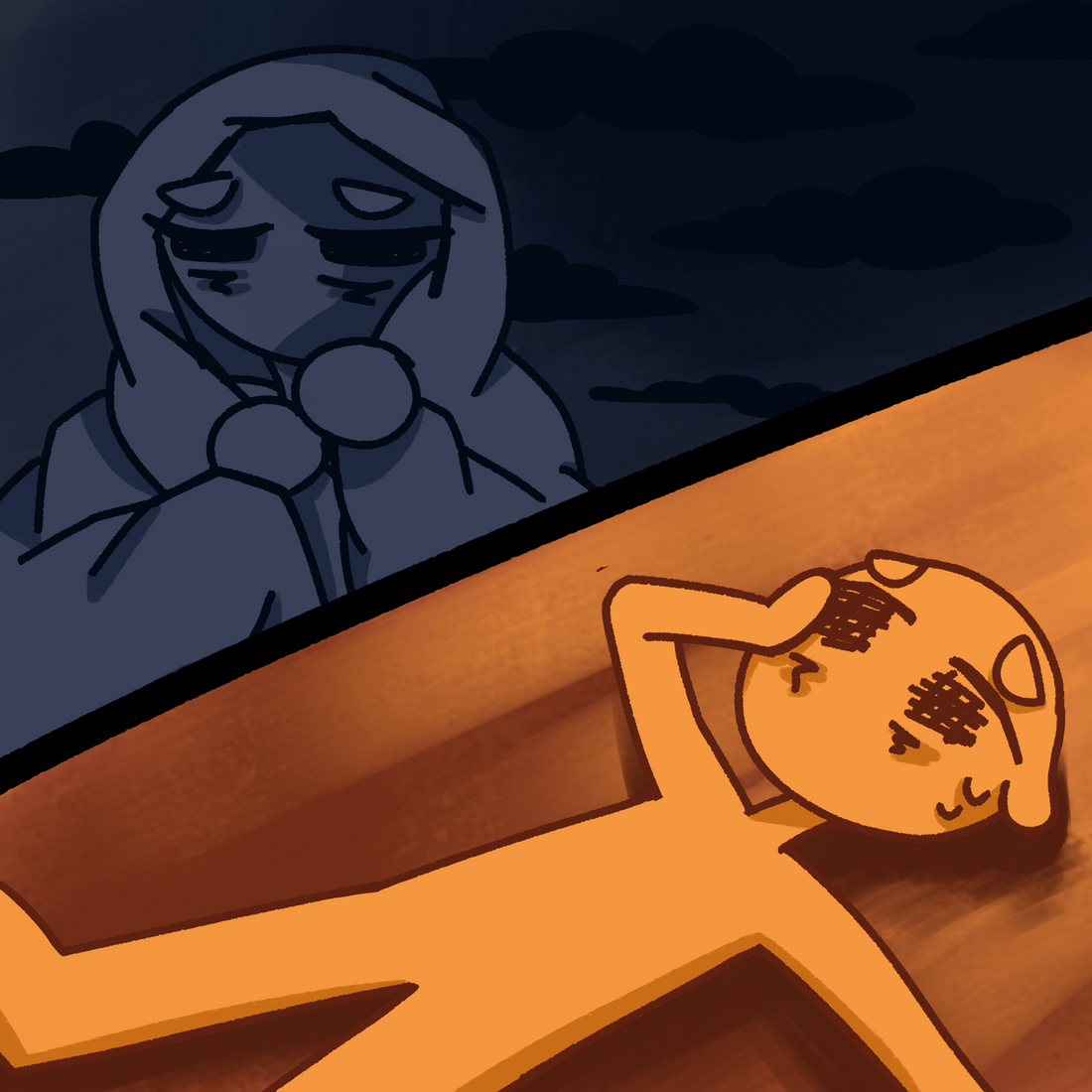The Winter Blues: Coping with Seasonal Depression
Seasonal affective disorder (SAD) is a type of depression that occurs at specific times of the year, most commonly during the fall and winter months. It impacts mood, energy, sleep, and appetite, often going unrecognized among young adults and students adjusting to seasonal changes.
Reading Time: 4 minutes

As the weather gets cooler and summer transitions into fall, people around the world have trouble adjusting to the new environment. While tropical areas tend not to have fluctuations in seasonal depression due to the lack of a regulating seasonal pattern, most locations that follow the Northern Hemisphere seasonal pattern, including the majority of the United States, face the greatest impact from seasonal depression. Some people, especially students, complain about having feelings of depression and loneliness during this transition. From experiencing warm, sunny mornings to suddenly catching a glimpse of the cool, breezy evenings, many face the gradual change in temperature and circadian rhythm. This rhythm, referring to the body’s natural 24-hour clock and sense of time, increases during nighttime and decreases during daytime. These unusual physical and mental changes are in direct correlation with seasonal affective disorder (SAD).
SAD is a type of depression that usually starts in late fall and transitions into the early winter stages. It is prevalent in millions of people worldwide, often emerging in the early stages of adulthood, and its effects tend to be dismissed or brushed aside. It follows a pattern throughout the seasons, affecting more individuals in the colder months compared to the spring and summer seasons.
There are two types of SAD: winter-pattern SAD and summer-pattern SAD. Winter-pattern SAD is the most common type of SAD, with symptoms including oversleeping, overeating (especially craving carbs), weight gain, feelings of hopelessness, struggles with concentration, seclusion and social isolation, and a decrease in sex drive. Summer-pattern SAD, though less common, includes symptoms such as insomnia, loss of appetite, weight loss, restlessness, anxiety, and, in some cases, aggressive behavior. Yet in both cases, the National Library of Medicine specifies that individuals tend to undergo changes in appearance, behavior, speech, and cognitive functions. For instance, an individual with SAD might start to speak at a slower rate, have difficulty concentrating and making decisions, or experience a decline in energy levels.
Although there is no clear consensus on what causes SAD, many researchers have concluded that a mix of factors, such as biological and environmental ones, are affected by sunlight exposure and therefore play a significant role in this shift. Hence, during the colder months, small amounts of daylight can disturb various body functions and hormones, such as melatonin and serotonin, that regulate a person’s mood and state of mind.
Melatonin is a hormone in the human body that plays a central role in regulating the sleep cycle. Acting as the body’s chemical messenger, melatonin production is directly related to the circadian rhythm and modulates the eye’s retina to prepare for rest. Too much melatonin, however, can increase drowsiness and fatigue, and people with winter-pattern SAD, who often overproduce melatonin, can have frequent headaches and heightened levels of demotivation.
Serotonin has an alternative function: it is a chemical in the brain that helps regulate emotions, mood, and anxiety. Despite being known as a natural mood booster, serotonin also plays a critical role in sleep, appetite, anxiety, and sexual desires. Its pathway consists of a network of neurons that allows it to function like a neurotransmitter. With the lack of sunlight correlating to lower levels of serotonin, those with SAD face disruptions in their circadian rhythm and may feel demotivated and unhappy.
Several parts of the human body, including the eyes, skin, and brain, rely on sunlight to function. When daylight becomes shorter, people frequently experience a deficiency in vitamin D and lower serotonin levels, disrupting body functions. The amount of exposure to sunlight affects the body’s ability to adjust its internal clock. A weak signal, such as dim light, can only affect people who have natural rhythms that are regulated, while a stronger light can shift the internal clocks of people with irregular natural cycles. Therefore, the fluctuations in sunlight exposure can lead to shifts in sleep schedules that can conflict with energy levels, often causing people to feel restless.
There are several treatments to help those with SAD. For example, light therapy brings exposure to artificial light that copies real sunlight, almost tricking the body into regulating its circadian rhythm. Psychotherapy, including cognitive behavioral therapy, is also effective. An intervention for anxiety disorders, psychotherapy generally refers to a category of techniques that target maladaptive thoughts and behaviors—also referred to as negative thoughts—and regulate anxiety over time. Another common treatment for SAD is the use of antidepressants, which helps boost the amount of serotonin in the brain. This reduces waves of sadness and feelings of demotivation. Vitamin D supplements may also aid in indirectly contributing to serotonin levels.
At Stuyvesant, seasonal depression is prominent, and as daylight savings time rolls around the corner, the nights become longer and the sunsets come earlier, forcing students to commute to and from school under darker skies. Students may be susceptible to mood swings; with overwhelming stress combined with the load of homework, they may experience greater changes in their mental health. However, it’s important to have regular self-check-ins and have a strong support system during seasonal changes to maintain overall well-being and reduce the effects of SAD.
